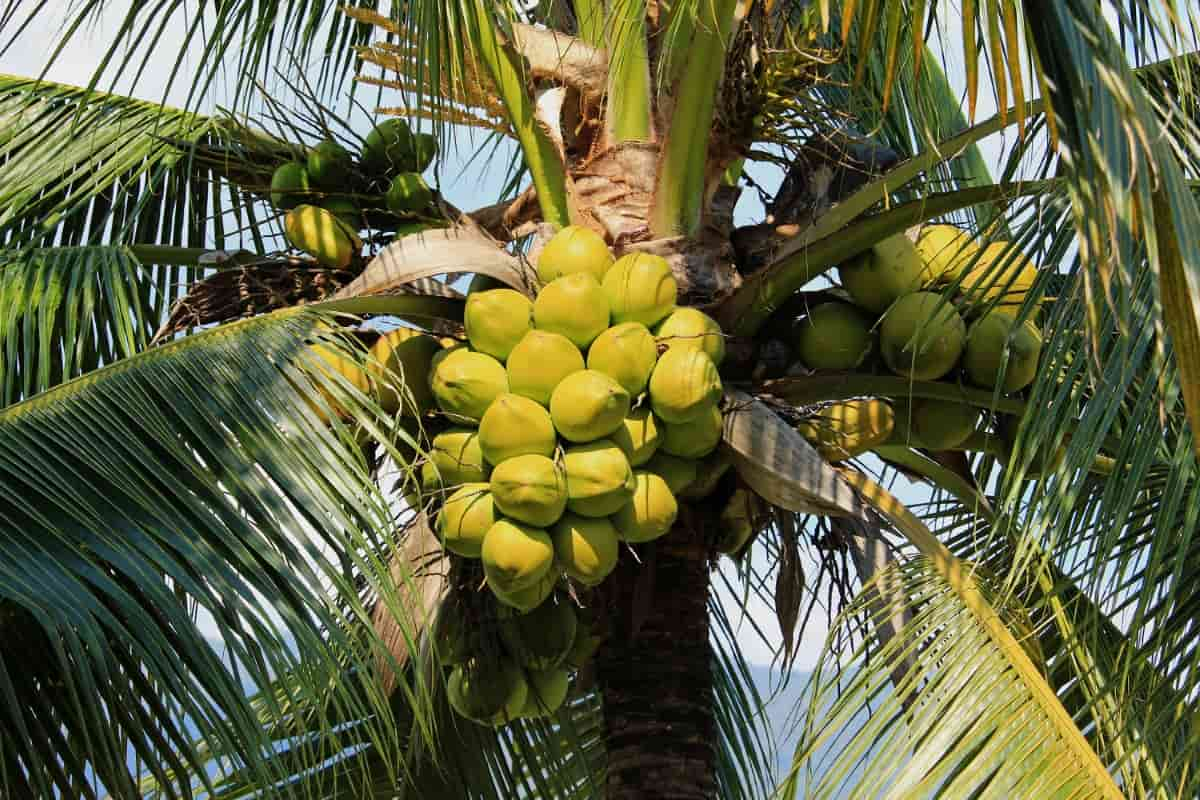Coconut Farming Essentials: Planting, Care, and Harvest Strategies

For people with weak immunity or frequent digestive issues, doctors often suggest drinking coconut water daily. This natural drink is full of nutrients and helps in quick recovery from illness. But have you ever thought about where these coconuts come from and how they are grown? Coconut farming is not just good for health. It is also a great way for farmers to earn a stable income if done properly.
In this blog, we will talk about everything you need to know to start coconut farming — from planting to taking care of the trees and finally harvesting them. Whether you’re a beginner or a farmer planning to switch crops, this guide will help you understand all the essentials.
Why Choose Coconut Farming?
To begin with, coconut trees are long-living. They can survive for 60–80 years and regularly provide coconuts once they mature. In fact, one healthy tree can give 70–100 coconuts every year. This means that farmers don’t have to replant the trees every season, and the maintenance cost is also low.
Moreover, coconut is used in many industries — oil, sweets, cosmetics, soaps, and more. So, its market demand stays strong throughout the year.
Additionally, coconut farming is flexible. It can be done in both small and large land areas. With the right care and planning, it gives high returns on investment, making it a smart choice for farmers.
Suitable Climate and Soil
Coconut trees grow best in coastal or tropical areas where there is good sunlight and regular rainfall. A temperature between 25°C to 35°C is best. They cannot survive in cold and dry regions for long periods.
For soil, well-drained sandy or loamy soil is ideal. Water should not stay near the roots for long, or it can cause damage. A soil pH between 5.5 and 7.0 is good for healthy growth. If the land has salty water or poor drainage, then the farmer must make arrangements for proper water flow.
Best Time for Planting Coconut Trees
The best time to plant coconut trees is during the beginning or end of the monsoon season, so that the young plants get enough natural water to grow. In India, June to August is a good period.
Before planting, choose high-yielding and disease-free seedlings that are at least 12 months old. The hole should be around 3 feet deep and filled with organic manure, topsoil, and dry leaves.
Keep a proper distance between each tree, at least 25 to 30 feet, so that they get enough sunlight and air.
Tools That Help in Coconut Farming
To maintain the land and carry heavy loads, farmers need a strong and fuel-efficient tractor. One such tractor that can be helpful in coconut farming is the Preet 3549. It is suitable for ploughing, hauling coconuts, and spraying fertilisers. Its compact size and high power make it ideal for farms with tight spaces or heavy soil. With a powerful engine and good mileage, this tractor can reduce the labour costs and save time during farming.
Watering and Manure
Young coconut plants should be watered twice a week. As the plant grows, you can reduce the watering frequency, depending on the weather. In summer, watering once every 4 to 5 days is enough. Drip irrigation is a smart option to save water and provide moisture directly to the roots.
For better yield, add organic manure or compost twice a year — once before monsoon and once after. Fertilisers like urea, potash, and super phosphate should be given in small amounts regularly for healthy growth.
Taking Care of Pests and Diseases
Coconut trees can be affected by common pests like red palm weevil, rhinoceros beetle, and leaf-eating caterpillars. These can damage the tree and reduce coconut production.
To avoid this, regularly clean the area around the tree and spray neem oil or other natural pesticides. If the infection is serious, consult a farming expert for chemical treatment.
Some trees also get diseases like leaf blight or bud rot. These can be prevented by keeping the tree clean and not allowing water to collect near the trunk.
Intercropping with Other Crops
Many farmers grow other crops like banana, pineapple, black pepper, or turmeric in between coconut trees. This is called intercropping. It helps use the land more effectively and also gives extra income. These crops do not disturb the coconut tree roots and can be managed easily.
However, the choice of intercrop depends on the climate and soil type. Proper spacing and planning are necessary so that all crops grow well together.
Harvesting and Profit
Coconut trees usually start giving fruit after 5 to 6 years. Once they begin producing, farmers can harvest coconuts every 45–60 days, depending on the tree and climate.
Climbing the tree and cutting the coconuts manually is a traditional method, but now many farmers use tools or hire skilled workers. After harvesting, the coconuts need to be transported for sale.
For this, a powerful tractor like the Sonalika 745 can be useful. It can carry heavy loads of coconuts and farm produce with ease. Its strength and durability help cover long distances, even on rough village roads. This tractor supports smooth transport, making post-harvest work easier and faster.
Conclusion
Coconut farming is not just a source of good income, but also supports a healthy lifestyle by giving us pure coconut water and oil. With the right knowledge about planting, watering, and harvesting, any farmer can grow healthy coconut trees.
Modern farming tools like the Preet 3549 for field work and the Sonalika 745 for transport make the job easier and more profitable. Whether you’re planning to start fresh or expand your current farm, coconut farming can bring long-term benefits if done with care and proper planning.
By focusing on quality planting, regular care, and smart harvesting strategies, farmers can enjoy good yields and strong profits from coconut farming.





